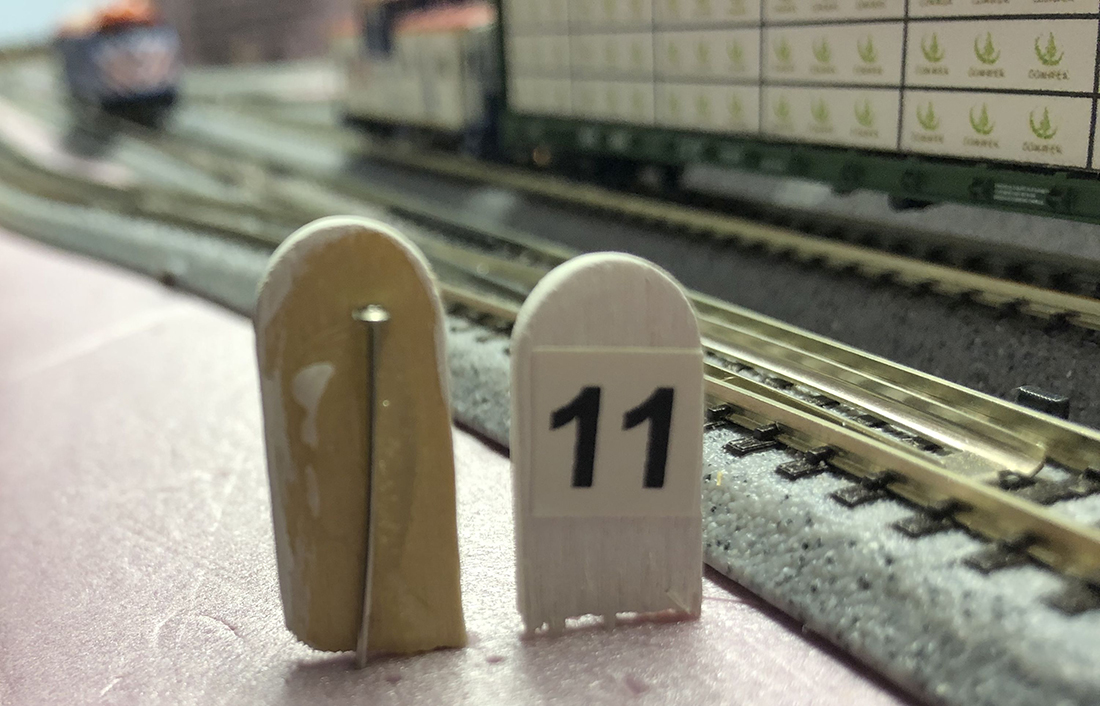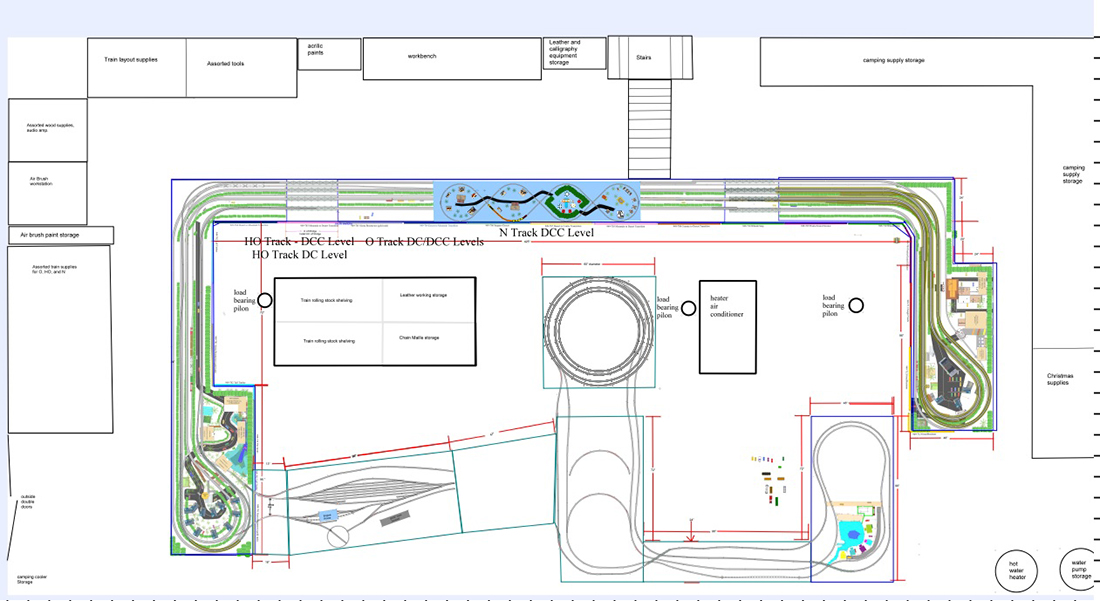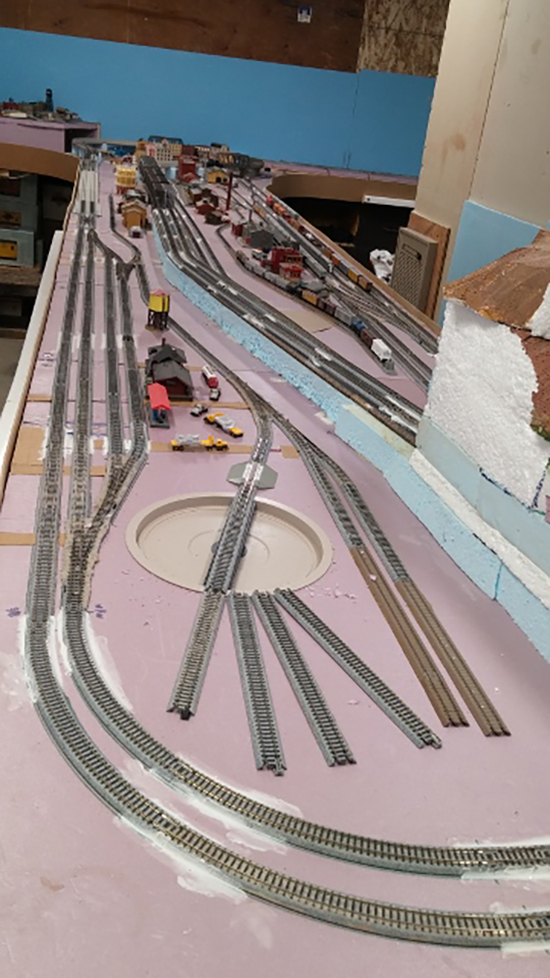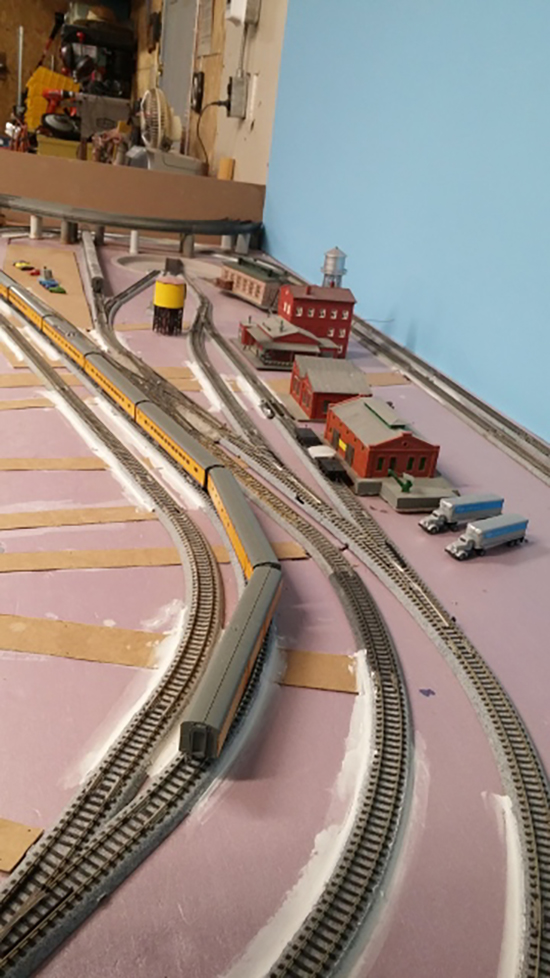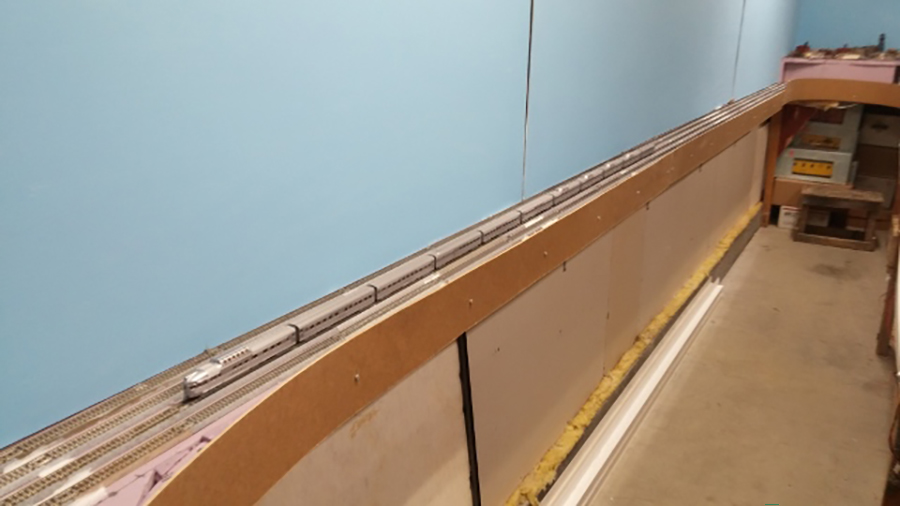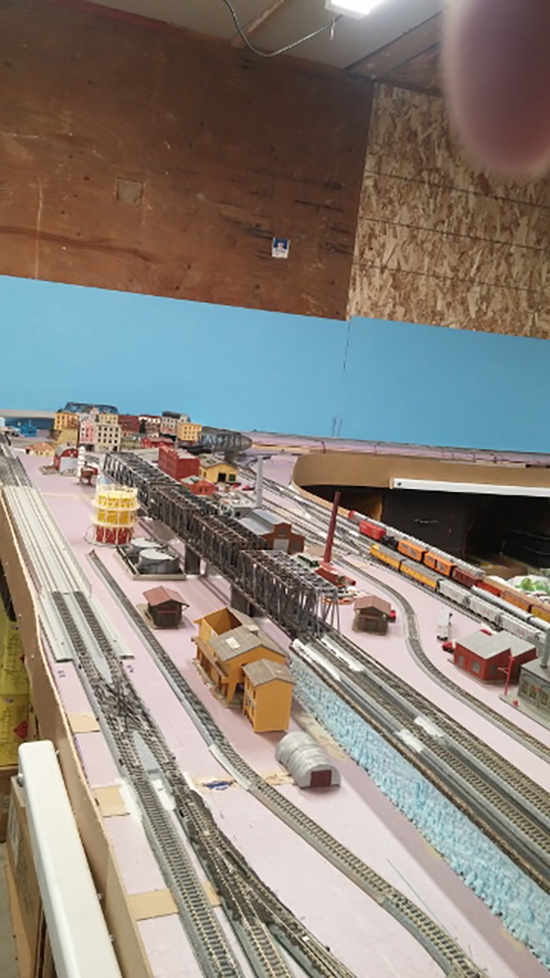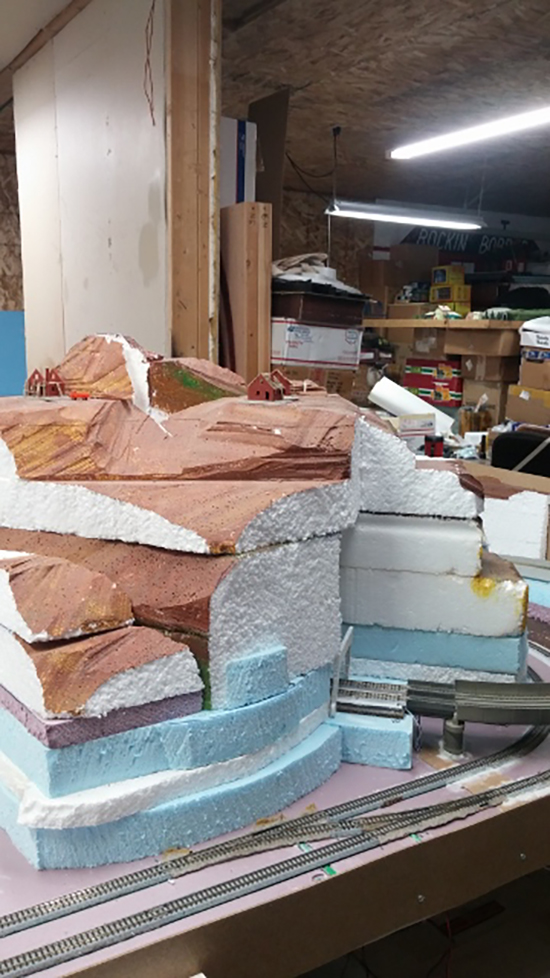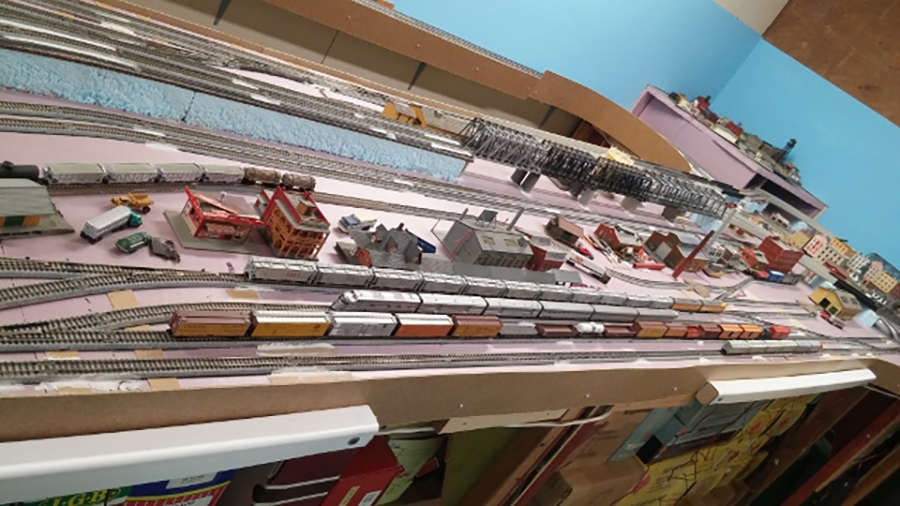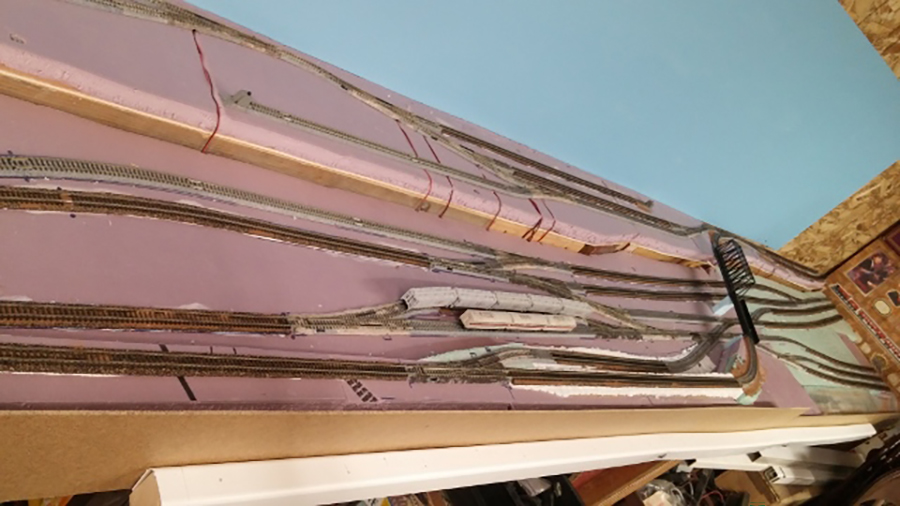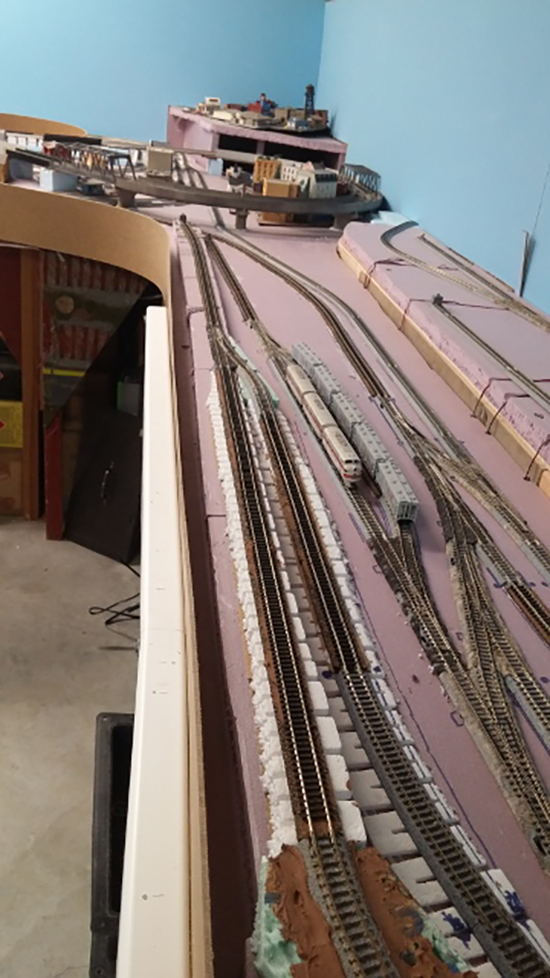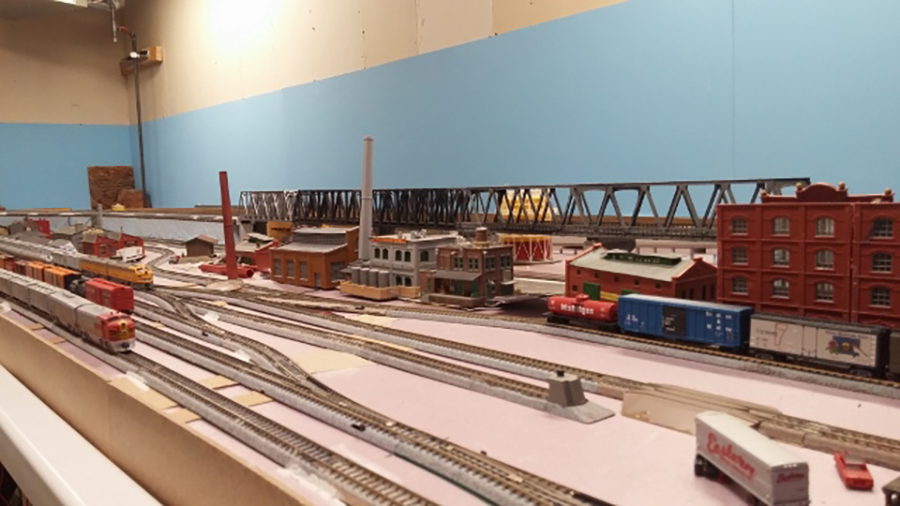Frank’s been in touch with his HO scale double dog bone layout:
“Originally my HO scale layout was located in a room I had a contractor build in our San Diego, California house attic.
As my layout inevitably grew, (evolved), I realized that the attic was too constraining. I raised the issue with my wife: “Should we move to a larger house or should I have a room built over our extended garage”. Her silent, cold, frozen stare told me that we were not moving.
Thus, I hired a contractor to build a room over our garage. What a problem! It took the contactor the better part of a year to demolish the entire two car garage which was attached to our home; drill down into the earth for earthquake proof construction, rebuild the garage, and over the new garage, construct the circa 30 by 30 foot model railroad room.
His comment: “All this for electric trains?”
Oh well.
Next I purchased an HO layout computer program and, on my desk-top computer, designed a modified HO scale double dog bone type layout with 48 inch diameter loops at each end.
I ordered and assembled about a “baker’s dozen” pre-fabricated tables; purchased boxes of 4 by 6 foot sheets of 2 inch thick, blue foam boards; boxes of HO scale flex track, boxes of cork track bed; scores of turn-outs, many boxes of track, additional transformers, rolls of various sized wires, etc. etc.
The blue foam was put over the plywood table tops but installed under the cork road bed for sound suppression. It works fine; except I had to buy a special very long drill to drill holes through the foam for track power leads. The thick form permitted cutting creeks and rivers that passed under the track, allowed for track adjacent elevated town streets, and for main-line track road-way “cuts and fills”.
Finally the hip-high, two main line, designed layout was up and running. But I wanted more trains running simultaneously. I then hired a contractor who installed a completely separate, eye level, 30 inches, and in places 48 inch wide shelf, around the layout room.
This shelf permits me to run four long freight trains on the eye level portion of the layout and two separate main line trains on the hip-high layout. Thus, now the layout will run 6 long trains simultaneously.
I like long trains, preferably freight trains of some 40 to 50 cars, snaking by parked fright cars and locomotives, across turn-outs, and through the country-side and towns. I have a built up town of some 35 or 40 structures/ buildings including various stores and a movie theater, which is reminiscent of, and named after the mid and late steam era city of Johnstown, (where the big flood occurred), Pennsylvania.
Is this it? Am I done, adding to or expanding the layout? Who knows?
Recently, my contractor quietly told me that to expand the current train room would require my wife, our dog, and me to move out of the house for about a year. NOTE: I am not dumb enough to raise this issue with my wife.
In building my layout I made every mistake in the book and scores that people never heard of.
Here are some random thoughts – suggestions – in no particular order:
Before beginning design for a new layout, determine if you love seeing long trains running, or if you prefer detail switching yards, and train “make up” activities. My layout has a plethora of yards, stub tracks, “Repair in Place” side tracks, and storage tracks, all wired up, but almost all of which I never use.
Don’t install track further away from you than ¾ of your arm’s reach. Don’t put track hidden behind buildings or scenery. Don’t put track in tunnels or mountains which have no “emergency” hand holes.
Don’t nail down or glue down track until you TWICE carefully go over it for vertical, horizontal and longitudinal alignments. Use a bubble level, to make sure the track rails are level with each other.
Repeatedly run you most de-railment prone locomotive in forward and reverse over your track before nailing or gluing it down.
Repeatedly run your most de-railment prone locomotive, forward and reverse over, through and across every turn out before nailing or gluing them in place. This is a great “pull you hair out” test for steam, 4-8-4’s and other locomotives with training trucks.
Don’t connect one piece of flex track to another section of flex track without carefully inspecting the connections for critical alignments; don’t install a turntable unless you provide for very long, straight, entry and exit tracks, half as long again as your longest locomotive.
Watch out when installing multiple interconnected sections of flex track on curves. You may end up with “locked-in” stresses which may cause the flex track and/or cork track bed to rise up and contort over time, particularly in a room that may be exposed to hot temperatures. If using white glue to fasten down track/cork road bed, try not to dilute the glue. That weakens the glue and may cause “Hold-down” problems.
Don’t buy “cheap” when buying track. Watch out for track profile dimensions and characteristics when mixing track manufacturer’s products. Don’t install a second main line paralleling an already installed main line without careful consideration of all potential obstructions, tunnel entrances; and “overhang” problems of long passenger cars and long locomotives.
Don’t over complicate, and crowd together installations of freight yards; stub tracks, and turnouts without careful consideration of necessary clearances and wiring problems.
Don’t run electrical supply wires without firmly taping a tag to each end showing where the power is coming from and where it is going.
Don’t install a shelf over your layout without appropriate lighting underneath.
Don’t inter-connect different radius turn-outs, or curved sectional track.
Don’t end up with more than one main, central, total layout control station.
Don’t end up with power transformers that are under-powered for the final electrical loads. It is wise to install “re-railer” track sections in line with turn-outs, tight curves, entrances/exits to tunnels or difficult to reach track work.
Try to have “walking access” to each side or end of your layout surface. I’m old and it really is a “Pain” to get down on my knees and crawl under the layout tables.
Railroad room: Make sure you have sufficient lighting for detailed work as well as when having guests.
Air condition the room, if possible. Watch out for aisle widths: The aisle widths in my layout room are, in places 26 inches wide – too narrow; and other areas 36 inches which is just enough for people to pass each other. Don’t have power cords on the floor of the layout room even when covered with power cord safety covers.
Try to have an adjacent space and workbench for a repair/build/ inspection area with table lighting, and space for a wide assortment of tools, glues/lubricants, etc. My railroad room has a
very convenient, and necessary, attached restroom.
Currently, my layout includes some 100 structures, many of which are illuminated. I have some 26 steam locomotives, from 4-8-8-4’s to 0-6-0’s and circa 35 diesel locomotives; 5 different complete passenger car sets and well over one hundred freight cars – bottom line: ”Too much stuff”
Frank
San Diego, California”
A huge thanks to Frank for sharing his HO scale double dog bone layout – great pics and what a narrative too.
I did enjoy his list of things not to do.
That’s all for this time, folks.
Please do keep ’em coming.
And don’t forget, the Beginner’s Guide is here if today is the day you stop dreaming and start doing.
Best
Al
PS Latest ebay cheat sheet is here.
PPS More HO scale train layouts here if that’s your thing.












